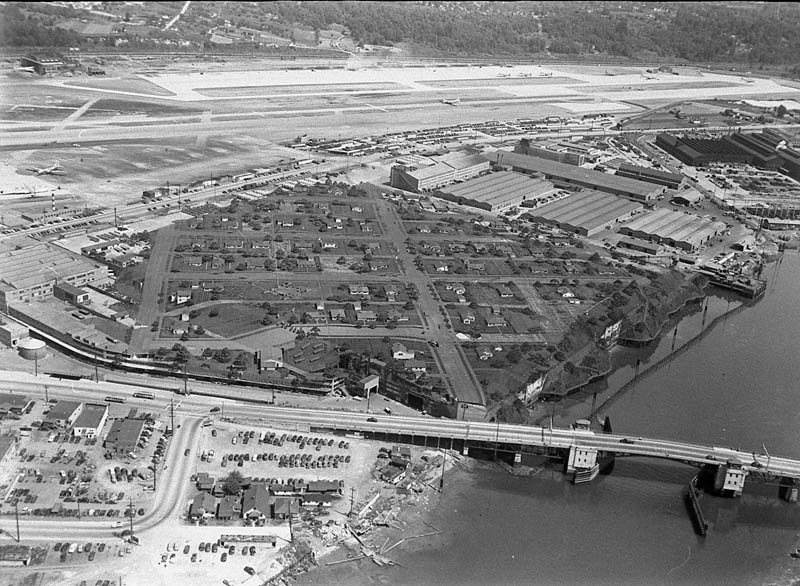
It’s February, 1942. US Navy Monitors have just tracked a Japanese submarine skulking just outside of San Francisco. A few nights later, a Japanese submarine surfaces off the coast of Santa Barbara and fires a few shells at an oil storage facility. With the memories of Pearl Harbor from last December still fresh, the threat of a Japanese invasion is palpable.
Enter Lt. Gen. John L. De Witt, head of Western Defense Command. He is tasked with the daunting order to implement ‘passive defense measures’ for all vital installations along the Pacific coast. Executing such an order fell to Col. John F. Ohmer who was stationed at March Field, about 60 miles east of downtown Los Angeles. Camouflage California was on.
Camouflage Netting: Covering Air Bases, Factories and Plants in WWII
Colonel Ohmer, who commanded a camouflage training center at March Field, was a pioneer in camouflage, deception and misdirection techniques. During the Battle of Britain in late 1940, when the full force of the Luftwaffe was attempting to bring England to her knees, Ohmer visited England and witnessed first-hand how carefully made and positioned camouflage was, which caused the Luftwaffe to waste thousands of tons of bombs on empty fields.
In addition to his team at March Field, Ohmer received help from the movie studios in Hollywood. MGM, Disney, 20th Century Fox, Paramount, Universal, all heeded the call; offering up their set designers, painters, landscape artists, carpenters, lighting experts and prop men.
The colonel and his crews began applying Hollywood techniques to camouflage some 34 air bases to include the planting of fake foliage and structural cover. Concurrently, Ohmer set out to conceal key factories and assembly plants that would be likely targets for a Japanese assault on the Pacific Coast. Facilities included the Douglas Aircraft plant in Long Beach, and the Lockheed-Vega aircraft plant in Burbank.
The Lockheed-Vega plant (shown above) was fully hidden beneath a complete suburb replete with rubber automobiles and peaceful rural neighborhood scenes painted on canvas. Hundreds of fake trees and shrubs were positioned to give the entire area a three dimensional appearance.
Maintaining the illusion of a neighborhood required careful timing and planning. The suburb had to show signs of life and activity. To do this, workers occasionally emerged to relocate automobiles, and through hidden trap doors in the canopy, appeared to take walks on hidden catwalks and pretended to do maintenance work. [Source]
Camouflage Netting in WWII Continued…
Flights over camouflaged areas tested positively as pilots were unable to identify the bases, factories and plants. Soon orders came from other areas of the US. In Seattle, the gigantic 26-acre Boeing Aircraft complex ordered the same treatment, blanketing the plant under netting; disguising the area as a suburb complete with municipal buildings, parks, schools and homes.
As the war continued, the threat of Japanese invasion pacified, especially after the US Navy dealt a crippling blow to the Japanese carrier task force at Midway Island. Eventually the camouflage would be removed but had the Japanese ever mounted an aerial attack it would have been fascinating to see if the camouflage netting would have proved successful. [Source]
Sources
– The Disguise of California by Dennis Casey
– Douglas’ Dream Took Wing in Santa Monica by Cecilia Rasmussen
– California Becomes a Giant Movie Set
– Hiding in Plain Sight
If you enjoyed this post, the Sifter highly recommends: